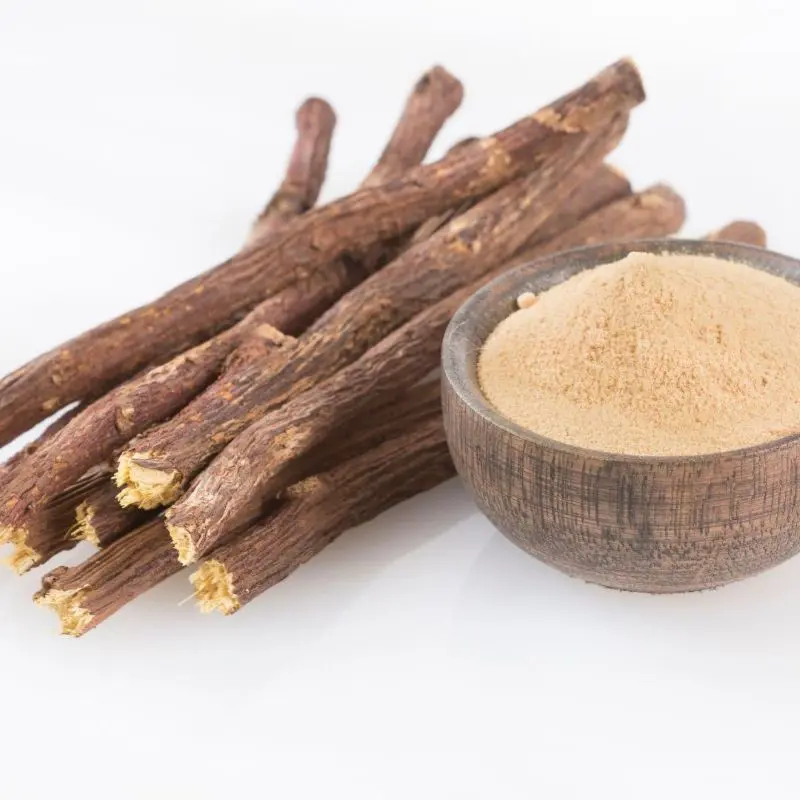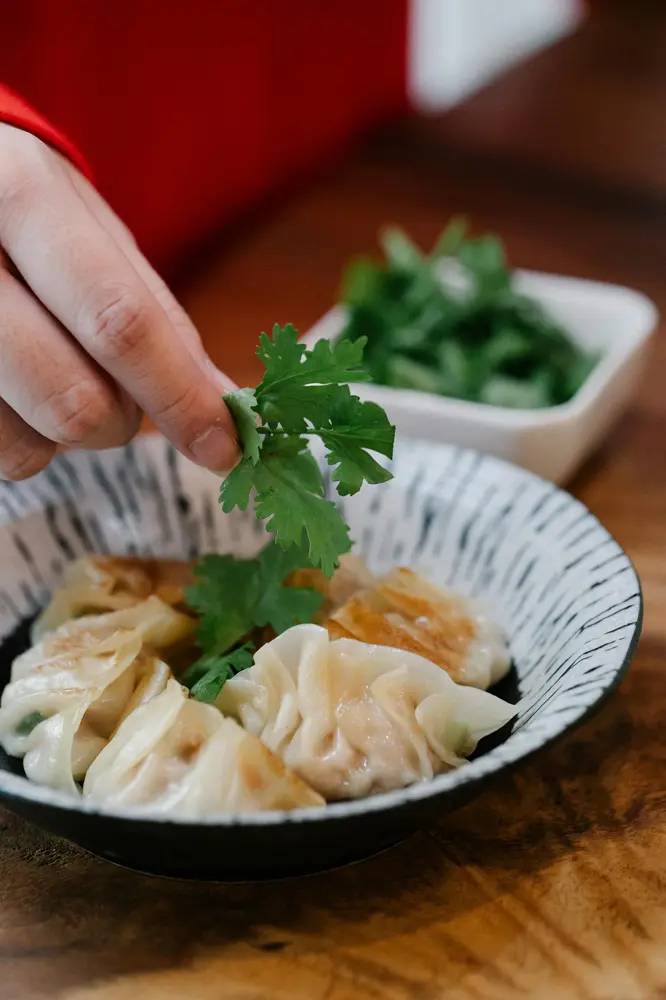Is Sushi Healthy? Some Good and Bad Choices
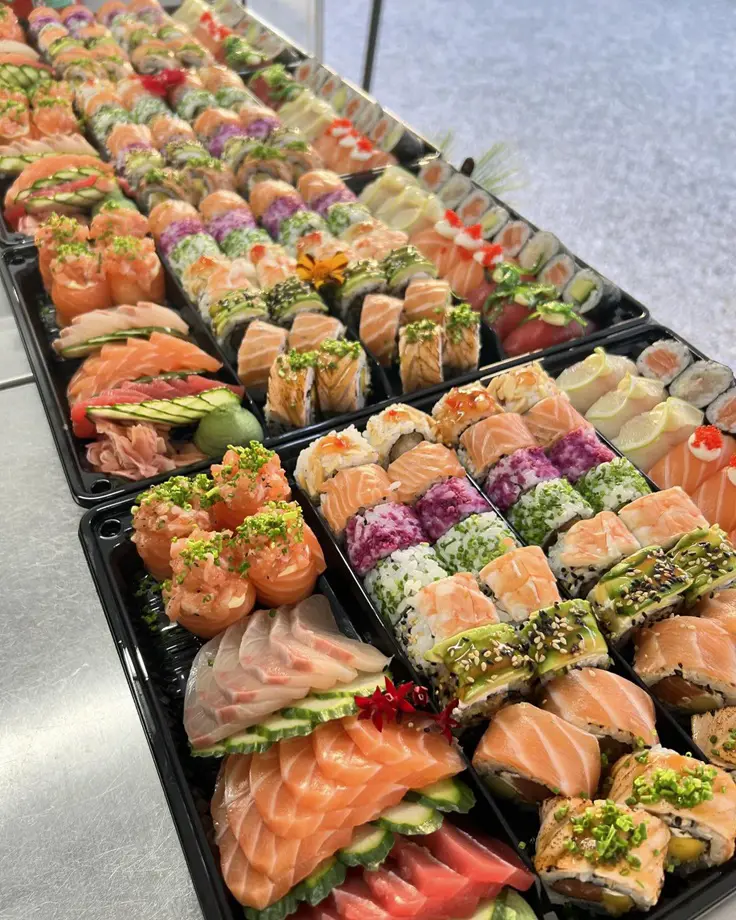
This post may contain affiliate links. If you make a purchase through links on our site, we may earn a commission.
Sushi is a wholesome meal and a beloved Japanese dish. The traditional sushi recipe is a simple combination of fresh fish, vegetables, and vinegared rice which is popular for its minimalistic preparation.
As with any food, there are factors that determine whether the sushi you crave often is a healthy choice. Here, we will explore what factors make any sushi a good or bad sushi and offer ways to be mindful so you can enjoy sushi without the extra guilt.
What Is Sushi Made Of?
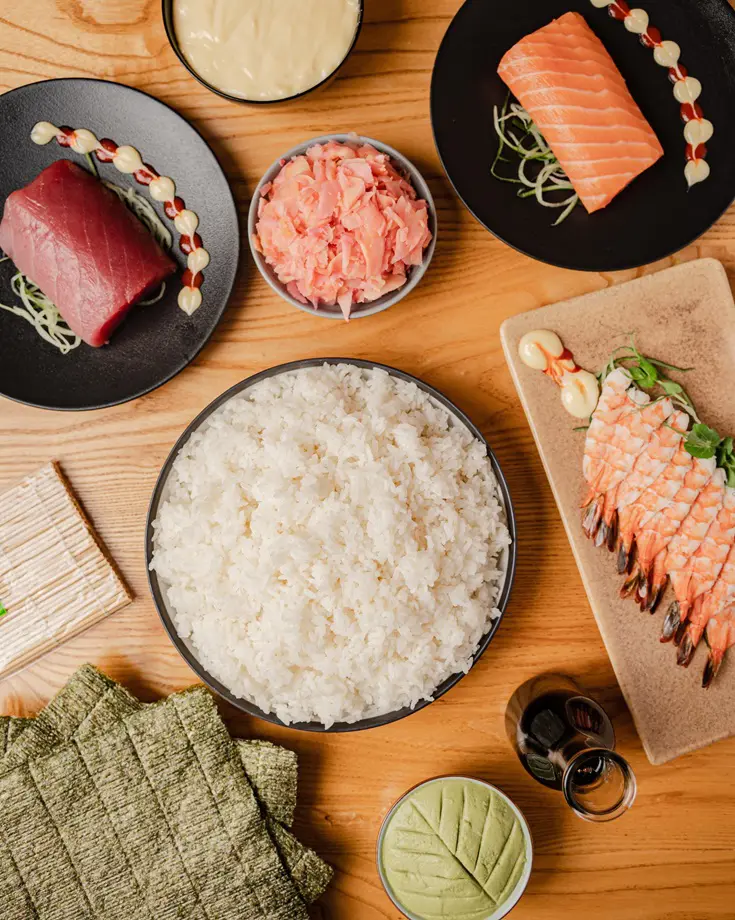
The traditional recipe used to prepare sushi uses the following key ingredients:
Rice: The rice used for making sushi is different. You can find it in the name of sushi rice, and its structure is quite anomalous, shorter and thicker than what we use in daily cooking. Once cooked, the rice can easily adhere to other ingredients in the recipe due to its characteristic sticky nature.
Rice Vinegar: The tangy flavor of the sushi is due to the use of rice vinegar. The cooked sushi rice is seasoned with vinegar, sugar and salt once it gets thoroughly cooked.
Nori: Nori, the seaweed makes the outer covering of the sushi. This thin, dark green-colored ingredient of sushi is roasted to get a slight crunch in every bite. Overall, it is one of the most important ingredients in sushi-making that helps hold everything together.
Fish: The ultimate meat used in traditional sushi is fish. Japanese people commonly use tuna, salmon, yellowtail, and eel to prepare sushi.
The type of fish used is what makes sushi expensive and a sushi-grade fish is carefully selected for freshness and quality. Fish might not be cooked all the time, some varieties of sushi are prepared with raw fish or marinated ones.
Vegetables: Vegetables are crunchy elements of sushi. Cucumber, radish and avocado are some common vegetables added to sushi, they are cut into adequate and size and rolled along with the meats.
Condiments: The flavor of sushi comes from soy sauce and wasabi. These condiments create a perfect balance of umami, spicy and salty.
Other Fillings: The ingredients aren't limited to what we have listed here. Several styles of sushi have been developed till now, which are prepared using other different ingredients like eggs, tofu, or even fruits.
Common Sushi Types
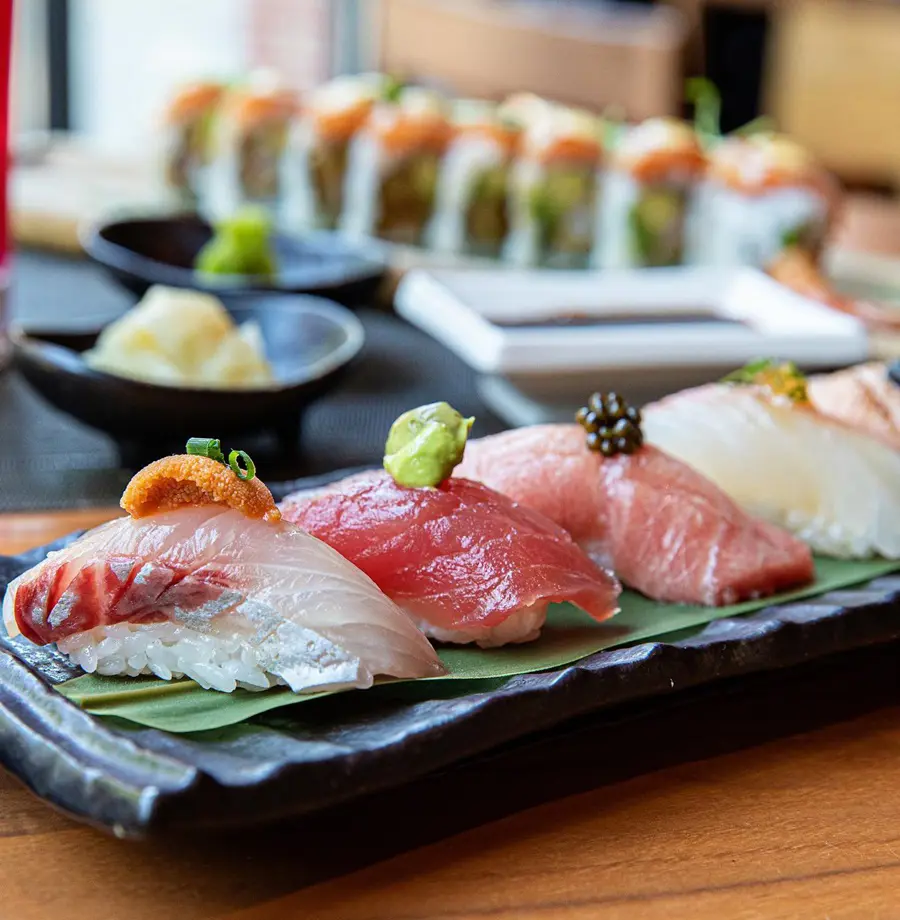
The traditional sushi rolls have been largely modified giving rise to several sushi types in the present day. Some popular kinds of sushi include:
Nigiri
It is a simple recipe containing a small mound of vinegared sushi rice topped with a slice of raw or cooked fish, seafood, or other ingredients. Seasoned mildly, this variety mainly highlights the flavor of fish.
Sashimi
This version does not have any rice in it. Rather, it's a thinly sliced raw fish served on its own. Seasoned well, this variety also sometimes focuses on seafood instead.
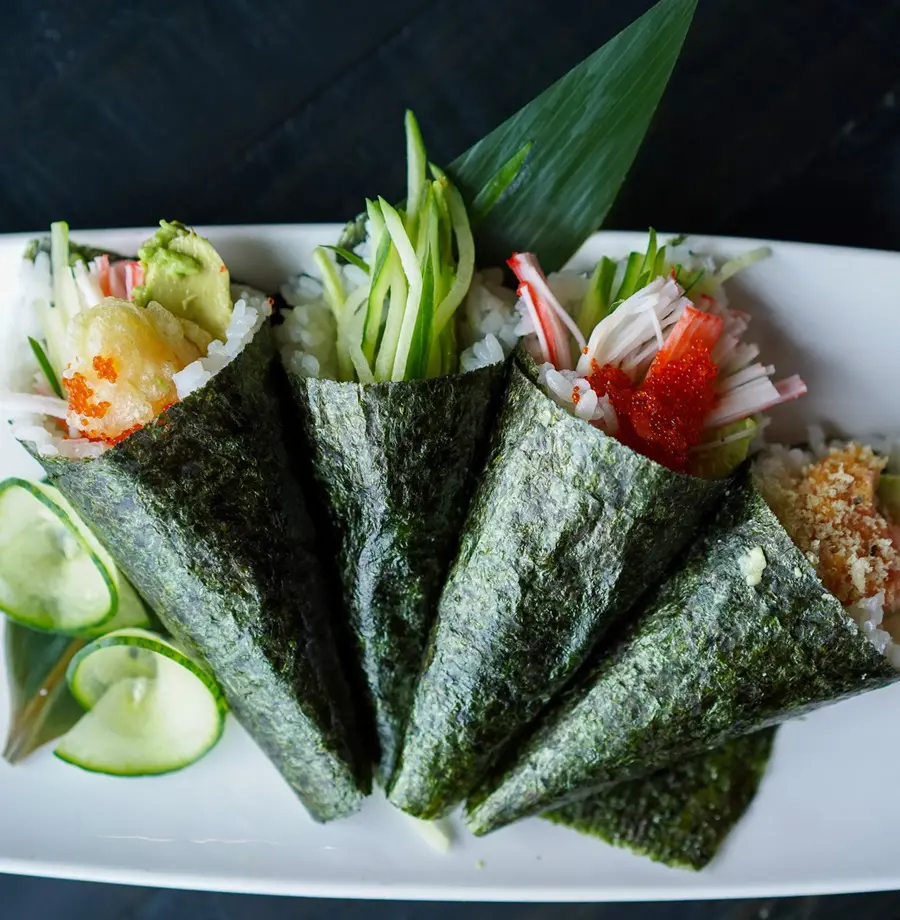
Temaki
Unlike traditional sushi rolls that are served in pieces, temaki is served whole. The composition is however similar. These cone-shaped rolls are eaten without chopsticks and are best served warm. The fun thing about temaki is you can customize the filling based on what you prefer.
Chirashi
This is an unwrapped kind of sushi. You heard it right, chirashi is served in a bowl where rice is in the bottom, and the toppings are scattered on the top. With the use of different toppings and garnishes, the bowl can be a healthy option for regular consumption.
Nazerushi
Though not commonly heard of, nazerushi is a traditional sushi with quite different preparation. Instead of freshly cooked rice and fresh fish, this sushi is made using fermented fish. Both rice and fish are fermented initially, but the rice is not included in the sushi. The resulting sushi is strong in flavor and very acidic.
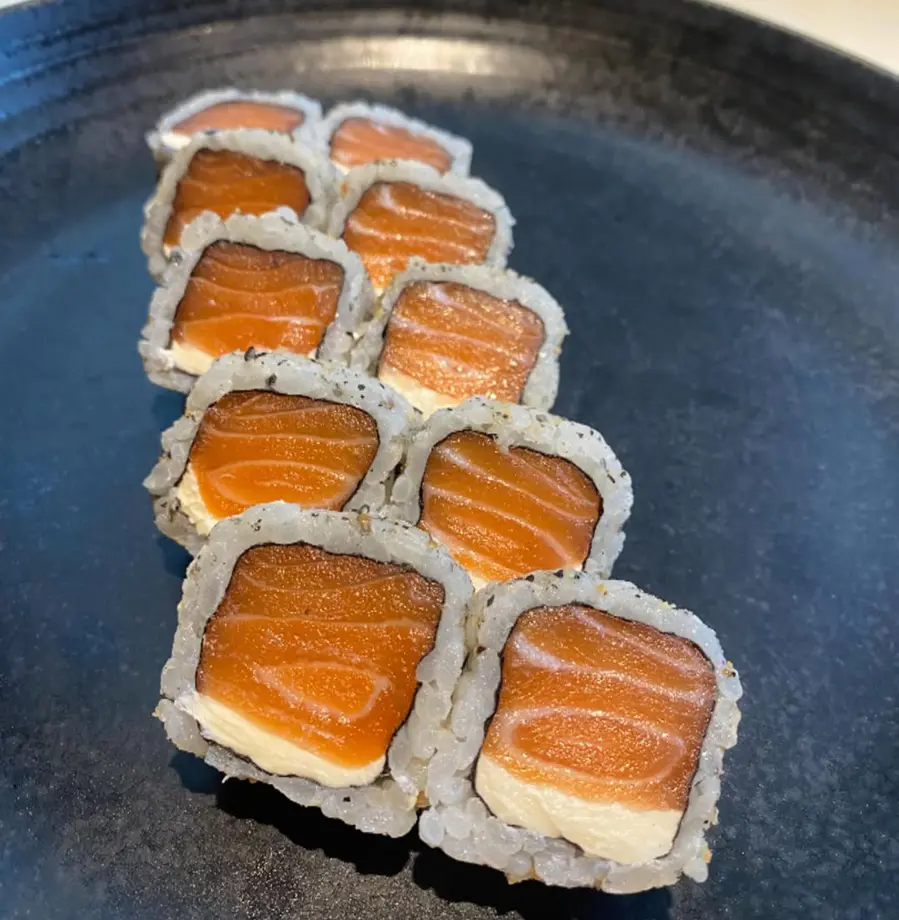
Uramaki
It is an inside-out sushi, with nori on the inner side and rice on the outer. Uramaki rolls can be quite large and are often topped with additional ingredients like sesame seeds, fish roe, or spicy mayo.
Maki
Maki is one of the most well-known types, the one we picture immediately when we think of sushi. The ingredients vinegared rice, fish, and vegetables are wrapped in a sheet of nori and the roll is cut into bite-sized pieces. The pieces are held with chopsticks for eating. The filling in this type of sushi is versatile and the sushi itself is easy to eat.
Benefits of Sushi
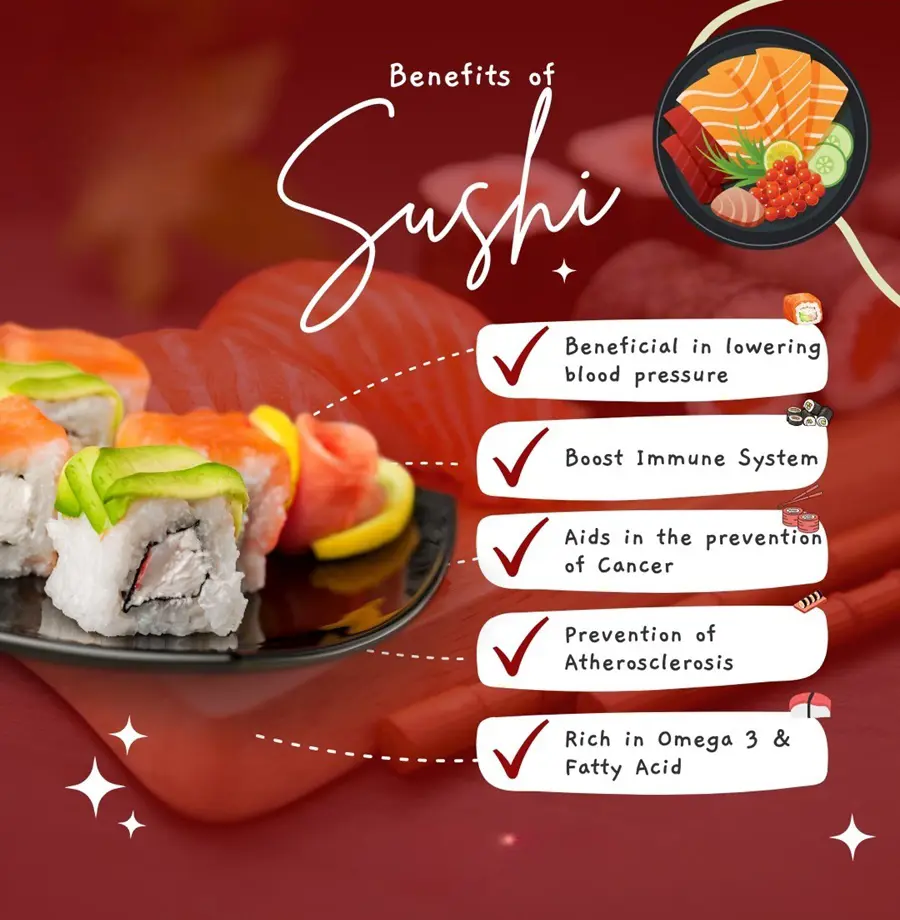
Sushi traditionally is a staple food in Japan and its health benefits are often highlighted. The several reasons sushi can make a healthy meal are:
Lean Protein: Sushi is a dish filled with meat, mainly nutritionally rich fish. The commonly found fish like salmon, a fatty fish is an excellent source of high-quality protein. These proteins are essential for muscle building and repair.
Supports Heart Health: The presence of fatty fish makes sushi a good food source for heart health. This is due to the presence of omega-3 fatty acids in these fishes, the best type of fat to maintain healthy cholesterol levels.
So, if your sushi has well-cooked fatty fish and you are eating them regularly, there is a high chance that your heart cells will remain vital for a longer time. The results however might vary depending on your lifestyle.
Boosts Immune Function: The vitamins and minerals found in sushi ingredients, especially fish and seaweed, can boost the immune system.
Weight Management: Simple sushi that does not contain extra ingredients except the traditional fish, rice, and vegetables are relatively low in calories. When consumed in moderate amounts, they can be a low-calorie option perfect for those looking to manage their weight.
Improved Digestion: As sushi is made with all-natural ingredients containing good amounts of fiber, consuming it can be good for gut health. Moreover, if the sushi contains fermented products, sushi rice may also offer probiotic benefits.
What Makes Sushi Bad?
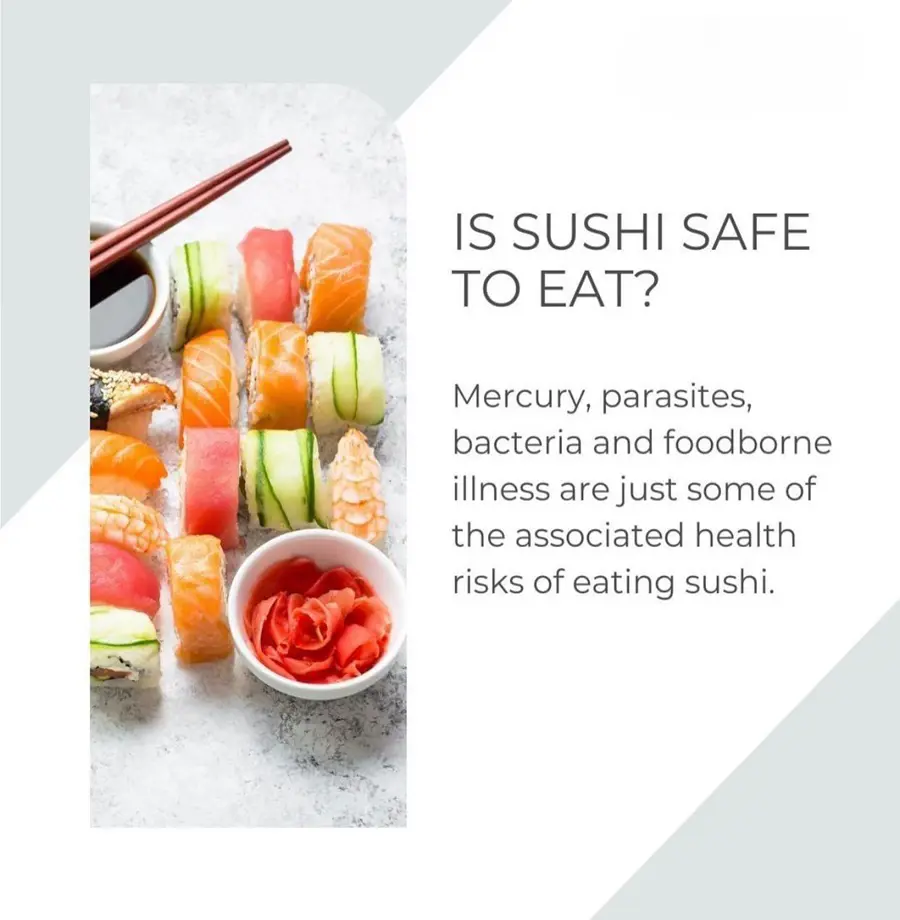
- If fish is not properly sourced or stored, it can be a great issue. News related to food-borne illness caused after eating sushi is common and the main reason is the use of contaminated fish in the preparation.
- Except for the safe handling of the fish, the high mercury content of some fish is also of great concern. Some fishes naturally have high levels of mercury which is not considered safe for pregnant women or young children.
- Excessively seasoned rice with sugar or salt is not considered healthy. It can add unnecessary calories and sodium to the sushi, causing health concerns related to heart and weight.
- Use of extra ingredients that tend to increase the overall calorie value of the sushi. These types of sushi should be avoided if you prefer the true nutritional value of traditional sushi.
Sushi With Unhealthy Ingredients
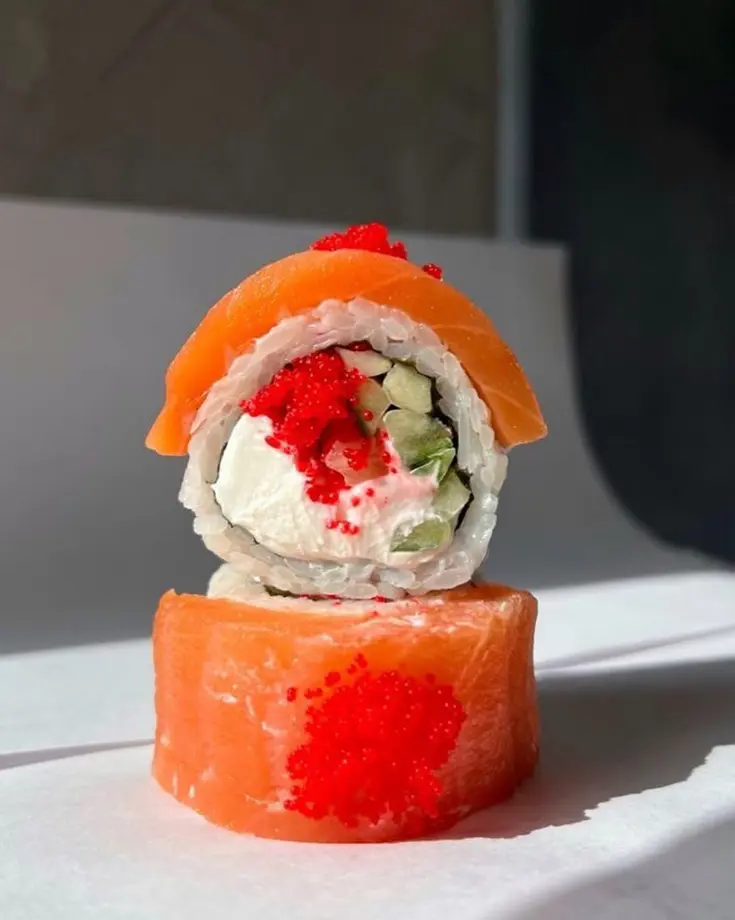
Some ingredients are added to sushi to make it tastier and more appealing, but on the hind side, this may result in food with undesired nutrition. Some of the varieties that are not considered good for health due to their content are as follows:
Philadelphia Roll: These rolls are made of cream cheese which contains a high amount of saturated fats. If you are eating it then it's better to control the portion size as a serving of this roll has about 350 calories.
Shrimp Tempura: Though shrimp tempura can't cause food poisoning related to contamination, bacteria get destroyed in high heat, and the fact that they are deep fried in oil makes it an unhealthier sushi choice.
Dragon Roll: Dragon Roll is made using sauces that are too heavy in calories. Also, the meat used in this type of sushi is unagi which is an endangered species.
Sushi With Fish Containing High Mercury Levels
There are fishes on the USFDA list that consumers are suggested to stay away from. Among such fishes, the ones high in mercury are not considered safe for regular consumption. Moreover, certain groups of people like children and pregnant women, whose body system is sensitive should totally stay away from those fishes.
Some high-mercury fishes used in sushi include swordfish, shark, marlin and king mackerel.
Potential Health Risks Of Sushi
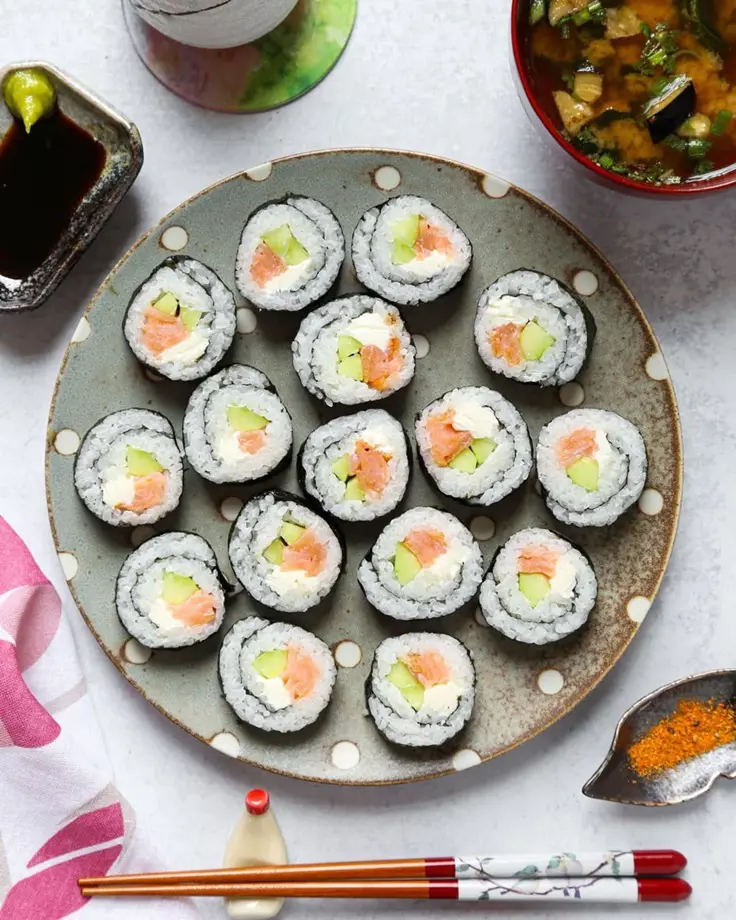
The frequent reports of illnesses caused by sushi are alarming. Let's look at the potential risks of consuming a bad sushi:
1. Foodborne Illnesses from Raw Fish
Raw fish is a good place to survive for microorganisms, the unhealthier ones. The common ones like Vibrio and Salmonella are associated with a range of conditions like vomiting and nausea if a certain amount of these bacteria gets into your stomach.
The symptoms are not always this mild though. If not treated in time the condition tends to get more severe.
2. Mercury Poisoning
As mentioned earlier, the FDA which regulates the edibility of food does not consider all fish safe to eat because of their high mercury content. Mercury is so toxic that it can damage the most important part of our health, the nervous system.
The effects of mercury can be so lethal that it can hinder the development process of a child's brain. Vulnerable populations like children and pregnant women need to totally avoid sushi made using such fishes whereas the healthier part of the population should also limit the intake of these kinds of sushi.
3. High Sodium Content
If you opt for sushi with high sodium content, you do have to bear the risks associated with it. The use of soy sauce with high sodium is what dramatically increases your sugar intake, which if continued for a long period can cause heart problems.
The best way to avoid this circumstance is by making sushi on your own, using soy sauce with low sodium, or, in cases you must eat outside, trying to minimize the amount of soy sauce you eat.
4. Presence of Allergic Ingredient
Jumping for sushi without knowing its content can turn out to be a disaster. Some individuals are allergic to fish or also seafood. If such individuals don't keep an eye on the type of sushi they are eating, they may immediately get sick. Sushi made using other healthy meats can be a better choice for them.
Soy allergy is another type of allergy that can cause problems here. So, if you are allergic to soy, get rid of sushi made using soy sauce. The classic ones that don't have soy sauce are best for you.
5. Eating More Than Required
Sushi is made with different delicious ingredients, so it's not a surprise if we all overeat! However, eating more than the serving size means an increase in calorie intake including refined carbohydrates.
If the type of sushi you are eating has excess fats then it can be more troublesome. The best way to maintain all the nutrition and calories is to stick to what dieticians recommend, 10 to 15 pieces of the rolls each week.
Ways To Make Sushi Healthy
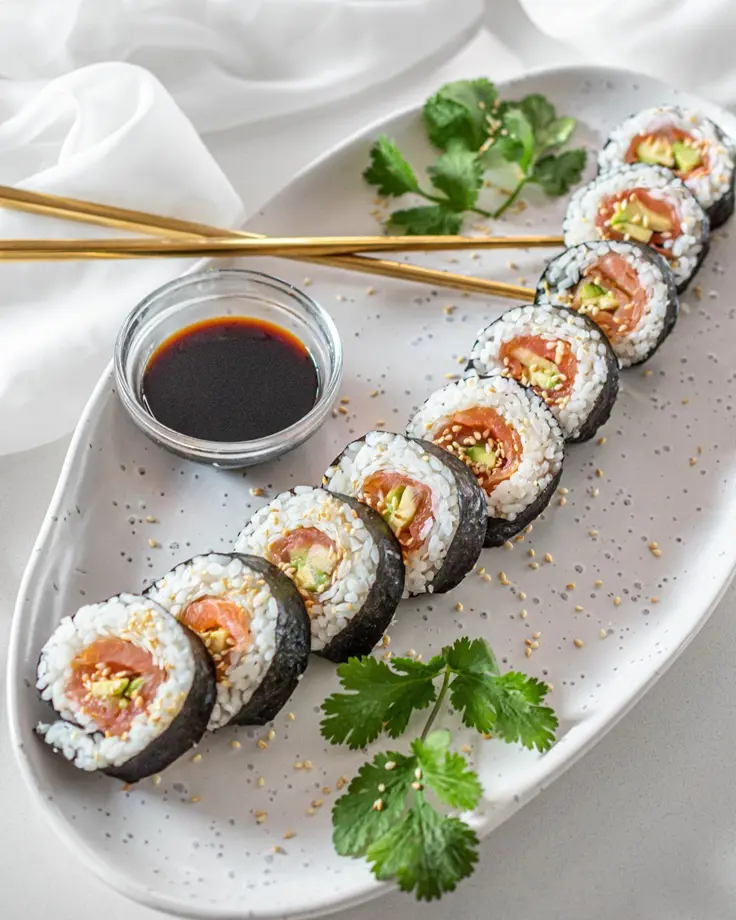
Sushi can be healthier if you choose to be aware of certain things. The ways to make the sushi-eating experience healthier are included below:
Opt for Brown Rice:
Nothing can beat the taste of the classic sushi rice, yet to enjoy sushi on a regular basis brown rice varieties like brown sushi rice is more preferable.
What's good about using brown sushi rice is that you would get fibers from it which increases the overall nutritional value of the sushi. Switching from white rice to brown rice in sushi is best if you want to enjoy an unlimited amount of sushi.
Be Cautious About The Sodium Content In The Soy Sauce:
There are detrimental effects of high sodium but there are also ways to reduce them in your sushi. Always use a low-sodium soy sauce option or avoid soy sauce altogether. Individuals who eat sushi by completely dipping it in soy sauce need to be highly conscious and should rethink if they are actually doing things right!
If you love soy sauce then there is another alternative for you as well. You can lightly drizzle the sauce on the top of the sushi.
Always Choose Fresh and Healthy Fillings
Some ingredients used in sushi like sweetened eel sauce or cream cheese can add unnecessary sugar to sushi. To make sushi healthy, it's important to use only simpler and traditional fillings.
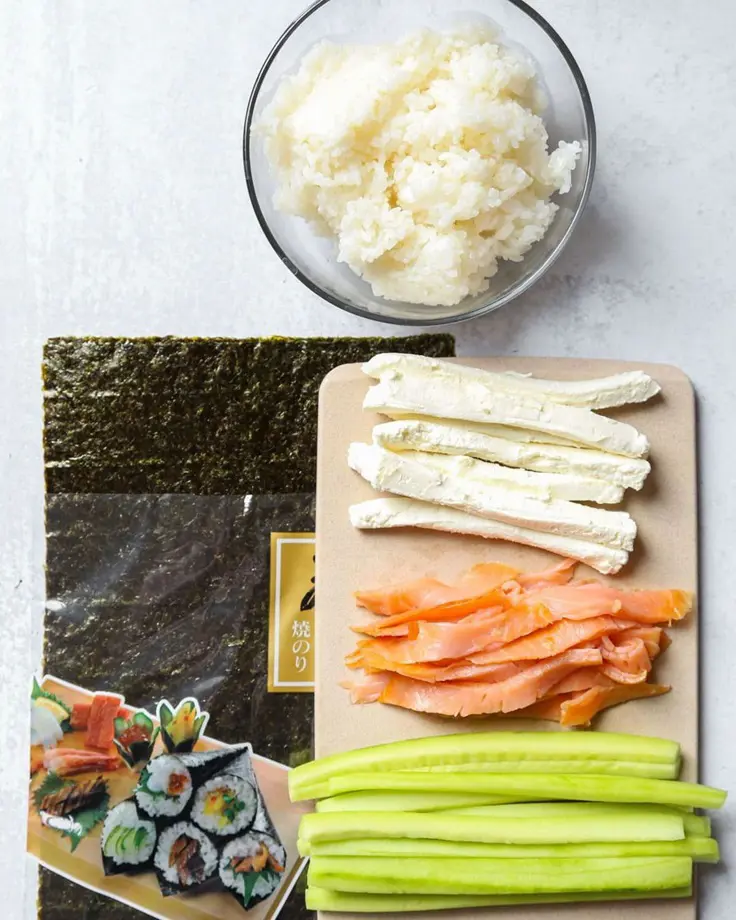
Control Portion Sizes:
It's best to limit the number of rolls to help control calorie intake and prevent overeating. Sushi can have 20 to 35 calories per piece, so it's best to not exceed the recommended calorie per meal.
The balance can also be maintained by focusing on low-calorie sushi like the ones with cucumber filling.
Choice of Fish:
Fishes high in mercury should be consumed minimally. Moreover, vulnerable groups can rather choose sushi made with fish that have negligible amounts of mercury. Salmon and tuna are some such fishes that are comparably healthy for such groups.
Also, always try to get sushi made with fresh fish to make sure you don't have to deal with food poisoning later. For the ones eating outside, don't order sushi unless you are eating in a restaurant known for its quality and food safety practices.
Recent posts
Nutrition
Nutrition
Liquorice Root: Benefits And Uses
You can spell it liquorice or licorice; this herb or root has been in use for centuries in most medicinal applications, as a natural sweetener and to enhance flavors. Regarding its origins, it comes from the root of the "Glycyrrhiza galbre" plant and...
Nutrition
Is Ramen Healthy? Here's What Dietician Says
Ramen is a traditional dish from Japan that in the recent era has become a global phenomenon. This beloved and comforting soupy dish however has been questioned, when it comes to its nutrition. Best for those looking for a quick (instant), affo...
Nutrition
Is Wheat Bread Healthy? An Expert Picks
Wheat bread has been proudly celebrated as a dietary staple in countless homes for as long as people can remember. It has earned a reputation as a healthier alternative to white or any other processed bread, that no one can deny. Because of its evide...
Nutrition
Is Sausages Healthy? Nutrition And Health Benefits
Sausages are tasty in an addictive way, making them one of the most popular foods worldwide. You may have enjoyed this convenient food often, whether on a bun with mustard or grilled on a barbecue, the simple preparation methods are what makes its co...
Nutrition
Ice Cream Benefits: Nutrition, Potential Risks And Best Choices
Not gonna lie, ice cream is often taken as a guilty pleasure treat, a delightful treat that takes you to cloud nine but is frequently associated with negative health implications. Nonetheless, the happy news is when devoured mindfully, ice cream can ...
Nutrition
16 Benefits Of Coriander That Will Surprise You
Abundant in nutrients and antioxidants, coriander is an annual herb with a characteristic aroma that is extensively used around the world. Both coriander leaves (also called cilantro) and seeds are used in various cuisines around the world. Known fo...
